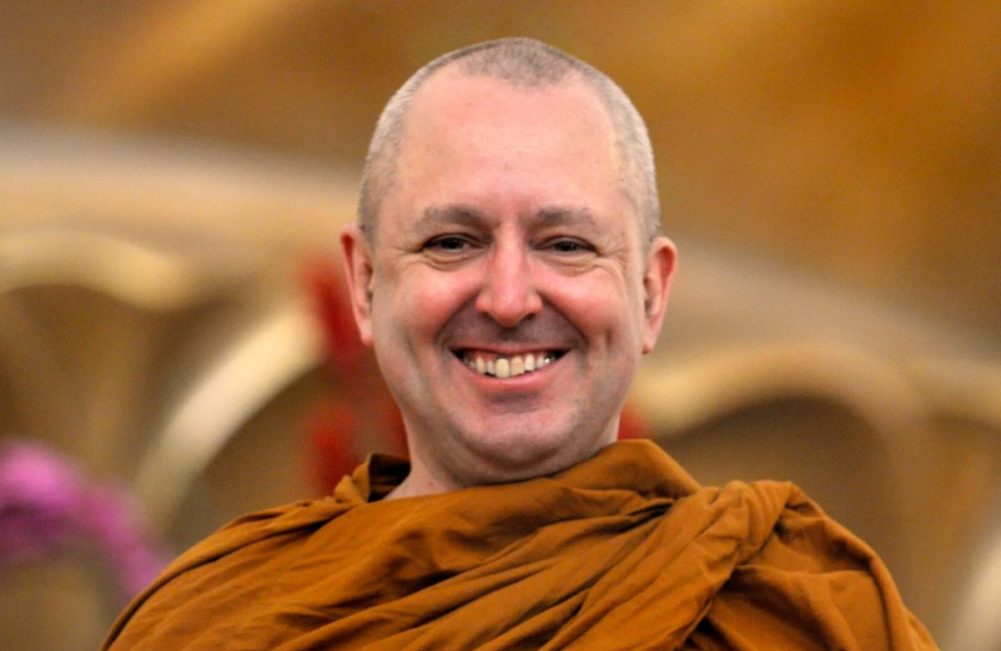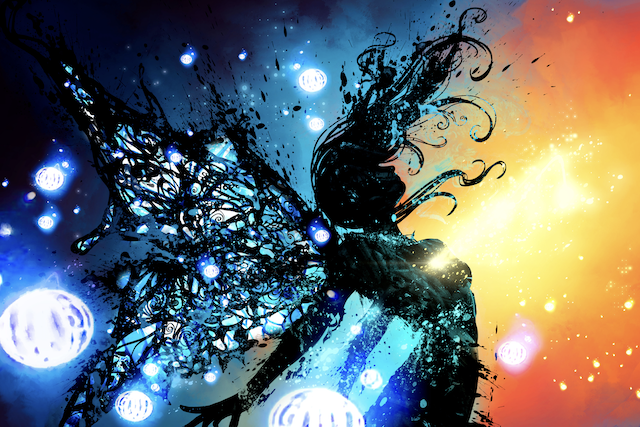Hope for the Hopeless
Rev. Blayne Higa on the founder of Shin Buddhism’s “spiritual insight of imperfection and radical acceptance.” It can lead us to the ultimate realization of buddhanature. The post Hope for the Hopeless appeared first on Lions Roar.

Rev. Blayne Higa on the founder of Shin Buddhism’s “spiritual insight of imperfection and radical acceptance.” It can lead us to the ultimate realization of buddhanature.

“O N E E V E R Y O N E • Kate, 2017,” by Ann Hamilton, Dell Medical Center, University of Texas at Austin. Commissioned by Landmarks. Courtesy of Ann Hamilton Studio.
The realization of one’s buddhanature is made possible only through an awakening to our limitations and inherent human imperfections. This paradoxical relationship is central to understanding the experience of awakening taught by Shinran Shonin (1173–1263), founder of Jodo Shinshu, or Shin Buddhism, the largest school of Buddhism in Japan and one of the oldest in America.
Shinran famously declared in the Tannisho (A Record in Lament of Divergences) that “hell is decidedly my abode whatever I do.” This brutally honest assessment of himself and the human condition is a hallmark of Shinran’s thought; he posits awakening as a twofold awareness of one’s own karmic evil (lack of buddhanature within oneself) and the working of the Buddha’s great compassion, which embraces unconditionally enabling our enlightenment. Shinran’s realization of his true inner self, which he perceived to be the exact opposite of an enlightened being, leads to his humbling confession
of how he does not see the existence of buddhanature within himself, and yet, simultaneously awakens him to the activity of Amida Buddha’s Primal Vow, which is inconceivably directed to him.
Shadow and light are commonly seen in opposition to one another but actually exist simultaneously.
In the Mattosho (Lamp for the Latter Ages), Shinran offers a stark description of human nature: “A foolish being is by nature possessed of blind passions, so you must recognize yourself as a being of karmic evil.” The ultimate spiritual reality for Shinran is the realization that human beings are karmically burdened and limited in their capacity for attaining enlightenment and thus are embraced by the compassionate activity of Amida Buddha. Shinran’s spirituality of imperfection therefore relies upon the working of the Eighteenth, or Primal, Vow, which is beyond the limited ego-self.
This realization is the Deep Mind of Shinjin, or “the entrusting heart,” which is the ultimate religious experience of Shin Buddhism. Shinjin is the aspiration to become a buddha, and it is the nature of a buddha to liberate all beings. According to Shinran in the Yuishinsho mon’i (Notes on ‘Essentials of Faith Alone’), “This shinjin is the aspiration to bring all beings to the attainment of supreme nirvana; it is the heart of great love and compassion. This shinjin is Buddha-nature and Buddha-nature is Tathagata.” The arising of shinjin within oneself is made possible through the activity of true reality (the transcendent realm of enlightenment) symbolized by Amida Buddha.
The late Shin Buddhist scholar Taitetsu Unno once described the Pure Land path as taking place by descending into the valley, the shadow of the mountains. Unno believed that it is in the valley and shadows where Shin spirituality flourishes, because it is where we encounter the dynamic working of Amida Buddha’s wisdom and compassion. This metaphor illustrates Shinran’s fundamental spiritual insight of imperfection and radical acceptance which leads to a life of transformation, wholeness, and the ultimate realization of our inherent buddhanature. Shinran’s spiritual path was one of critical self-reflection about his own limitations as a human being; awakening to the activity of perfect wisdom and compassion is what made his enlightenment possible.
This dynamic relationship between an individual and Amida Buddha is the heart of the Shin Buddhist path, which according to the late professor Takamaro Shigaraki means that “The Buddha’s great compassion does not exist apart from our realization of our own defiled passions and karmic sins. Great compassion exists, necessarily, when it takes in our karmic sin.” This acknowledgment and acceptance of our imperfections is the heart of Shin Buddhism, which opens up the possibility for spiritual transformation and the realization of our buddhanature.
Shinran saw himself as an icchantika, a hopeless one who is bound by their blind passions and unable to follow the Buddha’s path. It was only through becoming aware of his true nature that Shinran realized he was already within Amida’s compassionate embrace. The Nembutsu path of entrusting in the Vow of Amida Buddha offers hope for the hopeless, enabling us to awaken to our endowed buddhanature.
It is the hearing and recitation of Amida’s Name embodying the Vow that is the process by which we enter into a dynamic relationship with Amida Buddha. According to Shinran, in the Kyogyoshinsho (Teaching, Practice, and Realization): “The great practice is to say the Name of the Tathagata of unhindered light. This practice, embodying all good acts and possessing all roots of virtue, is perfect and most rapid in bringing them to fullness. It is the treasure ocean of virtues that is suchness or true reality. For this reason it is called great practice.” We receive the nembutsu as the working of a power beyond the self, which is the source of shinjin. The Name is the activity of enlightenment that is always moving toward us, and our saying of Namo Amida Butsu is our cry in response to this compassion. Shinran also writes, “Amida grasps beings with the Name. Thus, as we hear it with our ears and say it with our lips, exalted virtues without limit grasp and pervade our hearts and minds. It becomes ever after the seed of our Buddhahood, all at once sweeping away a koti of kalpas of heavy karmic evil, and we attain the realization of the supreme enlightenment.” It is this realization of Amida’s compassion working in his life that Shinran was grateful for, and which formed the basis of his thought. Shin Buddhist minister Rev. John Paraskevopoulos offers the following appreciation of Shinran’s encounter with the working of Namo Amida Butsu:
According to Shinran, as the realization of shinjin is the awakening of Amida Buddha’s mind within us, the nembutsu that is invoked with this awareness is, in fact, the action of Amida coursing through our very being and emerging as Namo Amida Butsu from our mouths. The nembutsu is thus the living voice of the Eternal Buddha declaring its presence in our world of suffering.
A buddha making itself known in the world of suffering for the sake of beings is the highest ideal of Mahayana Buddhism and aptly describes the compassionate activity of Amida Buddha that Shinran experienced.
It is in this way that we find wholeness and healing through a spirituality of imperfection that affirms our full humanness. Shadow and light are commonly seen in opposition to one another but actually exist simultaneously. This metaphor describes the activity of shinjin and the relationship between an individual’s shadow of imperfection and Amida Buddha’s light of perfection. Shinran describes this dynamic relationship in the Koso wasan (Hymns of the Pure Land Masters):
When we come to know truly that we are possessed of blind passions,
And entrust ourselves to the power of the Primal Vow,
We will, on abandoning completely our defiled existence,
Realize the eternal bliss of dharma-nature.
Thus, we are enabled to see our karmic shadow only through the illumination of the Buddha’s Vow. This is the Shin Buddhist life of awakening, revealed through the unfolding of shinjin.
Shinran discusses this entrusting to the Primal Vow in the Lamp for the Latter Ages: “Other Power is entrusting ourselves to the Primal Vow and our birth becoming firmly settled; hence it is altogether without one’s own working.” This is the entrusting heart of shinjin in which we surrender our trust in our limited ego-self to the compassion of the Buddha.
Shinran further develops this understanding of a life focused on perceiving the Name of the Buddha in the Jodo monrui jusho (Passages on the Pure Land Way): “Saying the Name is in itself mindfulness; mindfulness is nembutsu; nembutsu is Namu-amida-butsu.” This is the foundation of the Shin Buddhist path: hearing, reflecting, and responding to the call of Amida Buddha, which is the nembutsu. According to Shin scholar Dennis Hirota, “To hear the Name is to hear or apprehend the power of light, and this light or hearing becomes enduring mindfulness in the hearer.” A life of nembutsu is a continuous encounter with compassion embodied within the Name manifested in our daily lives. This activity of hearing and perceiving the nembutsu is an endless conversation between dynamic wisdom and compassion and beings living in the world of samsara.
Shinjin is both an experience of awakening and a process of becoming, which, according to Takamaro Shigaraki, happens when we “realize that there is no Amida Buddha apart from me; I realize that I am constantly living the life of Amida Buddha, together with Amida Buddha.” Thus, when we awaken to shinjin and say the nembutsu, a profound spiritual transformation occurs. We awaken to the great compassion of the Buddha that embraces us, and we are simultaneously made aware of the depths of our blind passion. Shinran writes in Teaching, Practice, and Realization, “The Tathagata gives this sincere mind to all living things, an ocean of beings possessed of blind passions, karmic evil, and false wisdom. This mind manifests the true mind of benefiting others.” Amida Buddha’s compassion is manifested through the transference of this wisdom-mind to all sentient beings. Through hearing, we awaken the mind that aspires for buddhahood and the mind to save sentient beings.
Shinjin is a growing experience nurtured in the soil of our everyday lives. I am continuously being made aware of my limited and imperfect self, which is embraced by Amida’s compassion through the joys and sorrows of life, like when I attended to my grandmother as she neared her birth in the Pure Land at the remarkable age of one hundred. Upon receiving the call from my father letting me know of her declining condition, I booked the next flight home. As I sat with her as a grandson and a minister, I naturally wished for more time even though I intellectually knew about the teaching of impermanence. My attachments and blind passions, as Shinran realized about his own, are difficult to overcome even in the face of this inescapable truth.
In the warm sunlit room that she had shared with my grandfather for so many years, I sat holding her gentle hand and realized how selfish I was being and how powerless I truly was. As much as I wanted her to stay just a little longer, she would soon be reunited with my grandfather, becoming one with limitless light and life itself.
As my quiet nembutsu matched the rhythm of her shallow breathing, I felt Amida’s compassionate embrace as I slowly began to let her, and my ego, go. My shadow was taken in and transformed by the inconceivable light of wisdom and compassion in the immediate present. In that moment, my grandmother and I were held within Amida’s Vow, which was made for us alone, just as Shinran exclaimed in A Record in Lament of Divergences: “When I consider deeply the Vow of Amida, which arose from five kalpas of profound thought, I realize that it was entirely for the sake of myself alone!” We are truly the object of the Buddha’s boundless compassion.
It is within a Buddha’s nature to liberate, to transform, and to heal. This is the dynamic working of Amida’s Vow to grasp and never abandon. This is the activity of wisdom unfolding as compassion, which transforms our brokenness into wholeness. In the Notes on ‘Essential of Faith Alone,’ Shinran describes this spiritual alchemy that is catalyzed by Amida’s compassion: “When we entrust ourselves to the Tathagata’s Primal Vow, we, who are like bits of tile and pebbles, are turned into gold.” When we begin to see ourselves in this way, our lives are nurtured, and we become more fully aware of our true humanness—our own buddhanature.

 MikeTyes
MikeTyes 






























